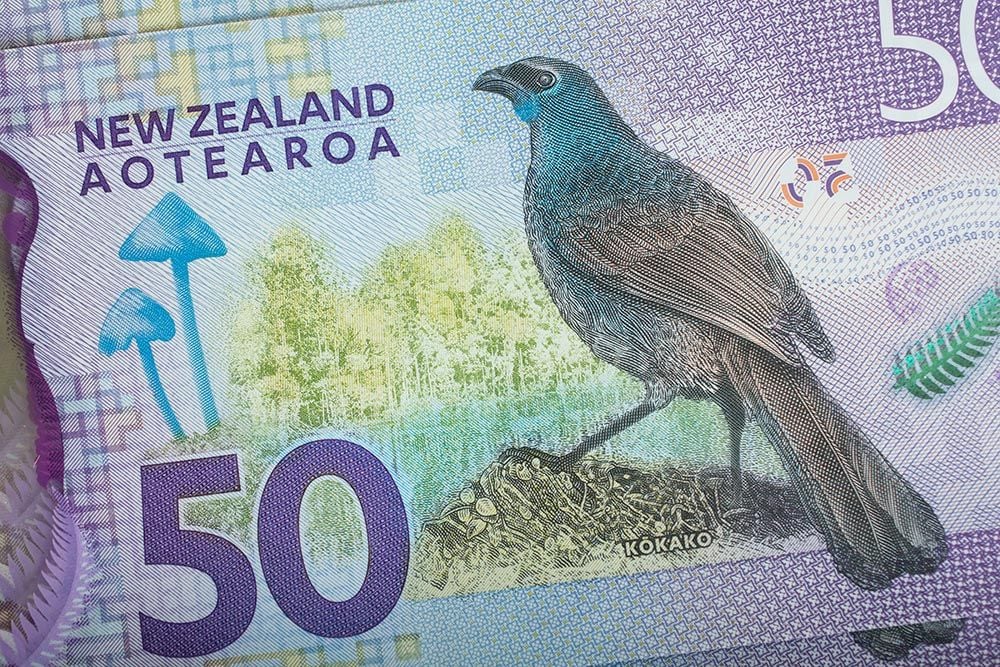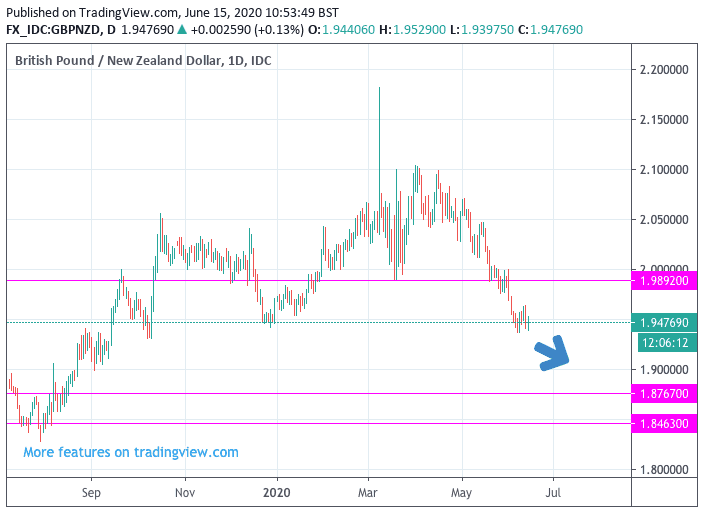New Zealand Dollar Expected to Extend Gains against Sterling
- GBP/NZD could sink to 1.8767 and then 1.8463
- NZD rally dented by market setback
- Investors fret over pockets of covid infections

Image © Adobe Stock
Secure a retail exchange rate that is between 3-5% stronger than offered by leading banks, learn more.
The New Zealand Dollar has taken a breather from a multi-week rally against the Dollar, Pound and Euro amidst another setback for global equity and commodity prices, however studies of the GBP/NZD exchange rate suggest further losses are ultimately likely during the foreseeable future as weakness is likely to be temporary in nature.
The New Zealand Dollar took a step back on Monday which is typical when markets are falling, as the currency maintains a positive correlation to investor sentiment. Markets fell and the NZ Dollar retreated as investors expressed uneases over pockets of rising covid-19 infections in the U.S., China and India.
In the U.S. four states - California, Texas, Florida and Arizona - reported in excess of 16.5K new cases over the weekend, which makes for close to 40% of the total new cases in the U.S.
According to data, 16 states in the U.S. are now estimated to have an R value over 1, which means the virus is actively growing in these states and dramatically raises the prospects of local lockdowns being put in place, even if it appears there is no chance of the Federal government pursuing a broader lockdown policy.
"If this driver continues to be at the forefront of markets' attention, we may likely see further retracement of the recent month’s positive risk sentiment and e.g. a stronger broad USD," says Lars Sparresø Merklin, Senior Analyst, FX Strategy at Danske Bank.
China has meanwhile reported an upsurge in cases with half of Beijing’s reporting new coronavirus cases as a mass testing effort brought total cases to 79 in China’s most serious upsurge in the virus in months.
By Monday morning, authorities said many of the city’s central districts had discovered cases after about 76,500 people were tested the day before.
Media reported last week that a cluster of new covid-19 cases have been linked to Beijing’s largest seafood and vegetable market, with the outbreak amounting to the most serious resurgence of the disease in the country.
We would however expect the market to maintain a nonchalant stance to China as authorities are notoriously robust in shutting down the spread of the virus, as was the case when an outbreak occurred in Jilin province in May.
For now the market setback does look to be a correction within an uptrend, triggered by fears of a second wave. However, it would likely require a significant outbreak - i.e. a genuine second wave - of the virus in the U.S. to really prompt a more concerted move lower.
Francesco Pesole, FX Strategist at ING Bank says the softness in the New Zealand Dollar could also have an element of fatigue to it, saying the rally looks to be tired.
"However, the ability of New Zealand to wipe out the virus arguably bodes well for the currency, as both consumption and tourism (NZ is likely going to be white-listed by most countries as a travel destination) may well get a boost. We expect NZD to outperform AUD next week," adds Pesole.
With this in mind, we would expect the New Zealand Dollar to show some near-term weakness as a setback to investor confidence plays out, but we are not confident this weakness will prove to be enduring and as such further gains are likely.
As such, any consolidation in the Pound-to-New Zealand Dollar exchange rate will most likely prove fleeting.
Indeed, analysis from Trading Central says as long as the GBP/NZD pair stays locked below resistance at 1.9892 further downside is likely, as only a pivot back above 1.9892 would turn the trend in favour of Sterling.
The Pound has been in decline against the New Zealand Dollar since early April when a multi-week rally faded and opened the door to a run that takes the pair to current levels at 1.9493.
Studies conducted by Trading Central show the Relative Strength Index - a measure of momentum - to be below 50, which advocates for further declines.
Elsewhere, "the MACD is below its signal line and negative. The configuration is negative. Moreover, the pair stands below its 20 and 50 MAs (respectively at 1.9892 and 2.0309)," says Trading Central.
Downside forecast targets are identified by Trading Central at 1.8767 support and then 1.8463.





